Ilon Mask told how colonists will live on Mars
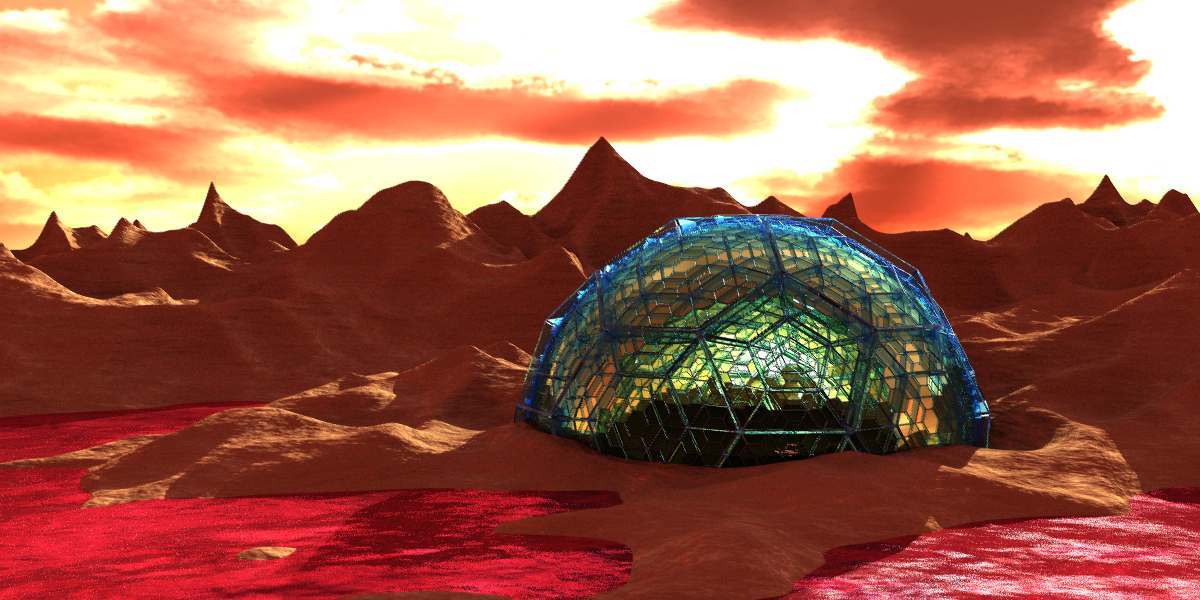
Ilon Mask suggests that the Martian colonists will live in glass geocapulums. Note: on the render is not Mars
Tonight, Ilon Musk held an AMA session (Ask Me Anything) on the popular Reddit forum, where he answered all the questions of the redditors interested in the establishment of the Martian base. Reddit users are famous for their cynicism and corrosiveness, so Ilon had a hard time.
As usual, at the beginning of the AMA session, the participant confirmed his identity through a third-party identification service (in this case, Twitter). In a tweet, he asked participants to limit themselves to questions about space. This is necessary, because there are a lot of questions for Ilon. The session of questions was devoted only to space and the main mission - landing on Mars.
Martian space program
The most topical issue in the AMA branch was a request to describe in detail what equipment and procedures will be required to carry out the refueling of spacecraft on Mars. After all, refueling ships is a fundamental condition to reduce the cost of delivering goods to Mars and back, otherwise ships will have to carry fuel for the return trip, and this fuel will make up the lion's share of the "useful" cargo. The redditor also asked if refueling will occur automatically during the first unmanned missions. And are there plans to develop a third version of the Interplanetary Transport System with attachment of cargo in the form of shuttles in order to transport larger loads.
')

According to the initial draft of the Interplanetary Transport System, presented at the presentation on September 27, 2016, it is planned to use the following structural components of the system:
- Returnable launch vehicle for launch from Earth. It will be created based on the latest version of Falcon 9 Block 5, said Ilon Musk. Together with this new version, the Falcon 9 missile classification takes the following form: Falcon 9 (v1.0), Falcon 9 v1.1, Falcon 9r v1.1, Falcon 9 Full Thrust (FT, v1.2), Falcon 9 FT + and, finally, the Falcon 9 Block 5, called today. For the name of the latest version of the rocket inside SpaceX, the acronym BFR is used, but it is not too harmonious to be used outside the company, Ilon suggests.

- Interplanetary spacecraft to deliver cargo and people to Mars and return them to Earth. The project of the ship’s residential section is planned to be prepared and published for general discussion within one to two years.
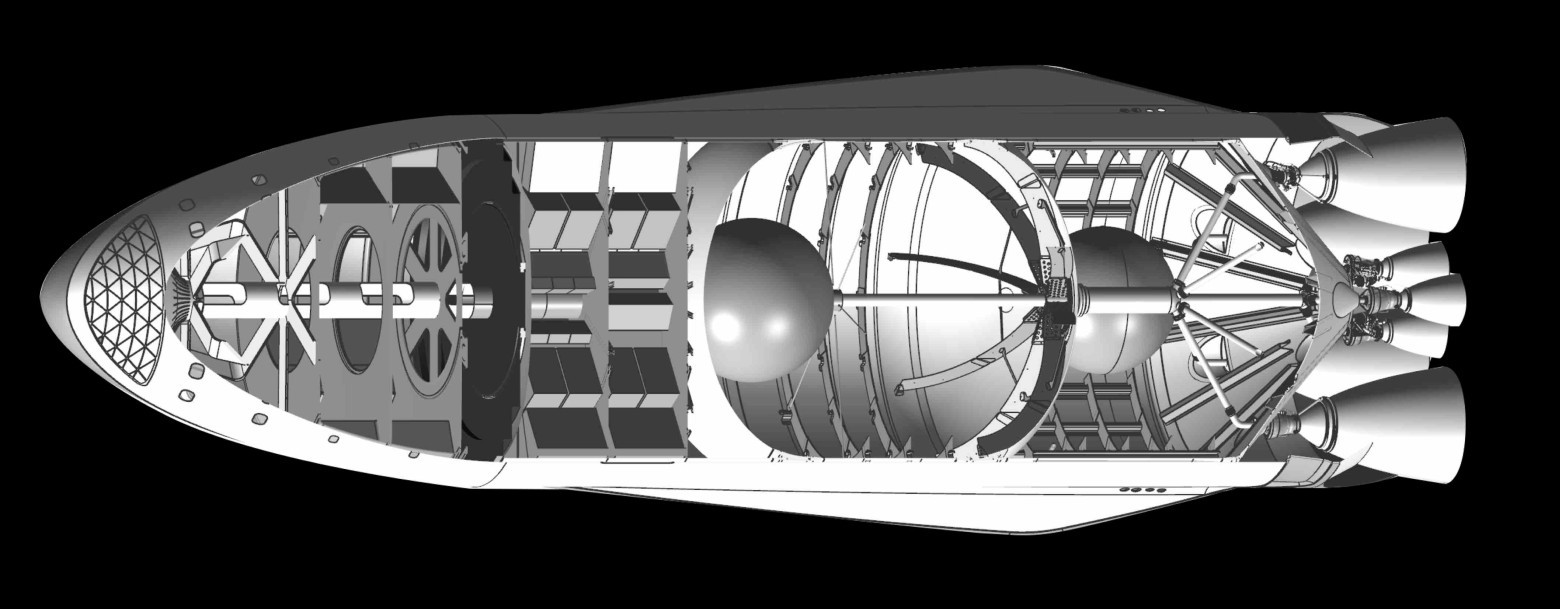
Spacecraft Interplanetary transport system with spherical fuel tanks, which are used during landing on Mars - Ship refueling vehicle for refueling a spacecraft in Earth orbit.
Key features - reusable use of all components, refueling in orbit and the production of fuel on Mars.
Ilon Mask honestly answered that while SpaceX engineers are far from approving a detailed plan. Now the following is planned.
The first stage . Conducting reconnaissance missions of Dragon to ensure that landing is possible without adding a new crater on the surface of Mars ( hello, Schiaparelli ).

Dragon's unmanned ships will fly first to Mars.
According to the results of the reconnaissance missions, an optimal decision will be made on the method of extracting water (hydrogen) for producing methane using the Sabatier reaction .
Reaction Sabatier is the reaction of hydrogen with carbon dioxide at elevated temperature and pressure in the presence of a nickel catalyst for methane production. Ruthenium with alumina can be used as a more effective catalyst.
CO 2 + 4H 2 → CH 4 + 2H 2 O + energy
The second stage . The Heart of Gold spacecraft flies to Mars, loaded only with equipment for building a rocket fuel plant.
The load of the ship and its speed are dependent values, as shown in the graph.
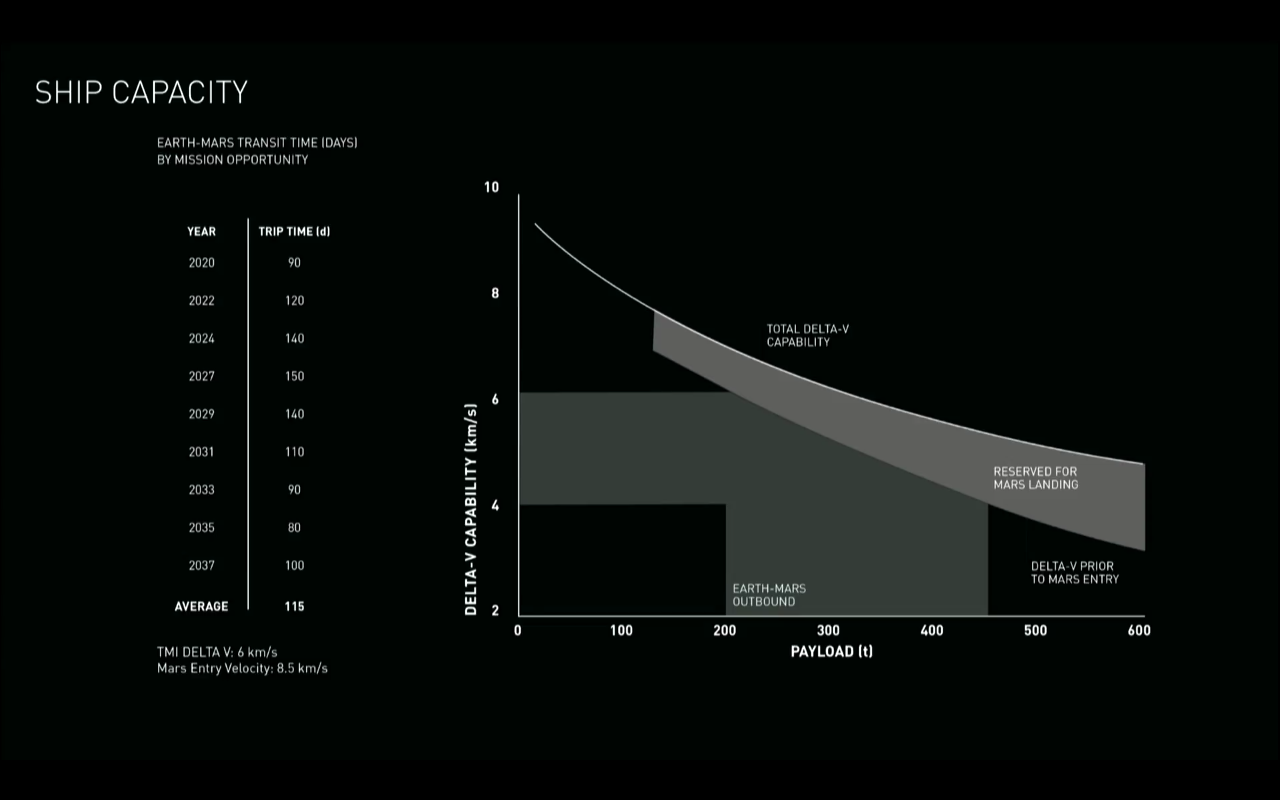
It should be clarified that the name of the ship "Golden Heart" is taken from the fictional universe of the book "The Hitchhiker's Guide to the Galaxy". According to legend , this is the first ship with the Engine of Infinite Improbability .
Ilon Mask explained that he likes the name of the first ship that works on infinite incredibility. According to Mask, this corresponds to the real chances of launching this ship to Mars.
Incidentally, the number of 42 engines for the launch vehicle Ilon Musk also chose not by chance. For this, geeks are so fond of him: all the actions of the American entrepreneur and visionary are exceptionally thought out, understandable and close to the heart of each of us.
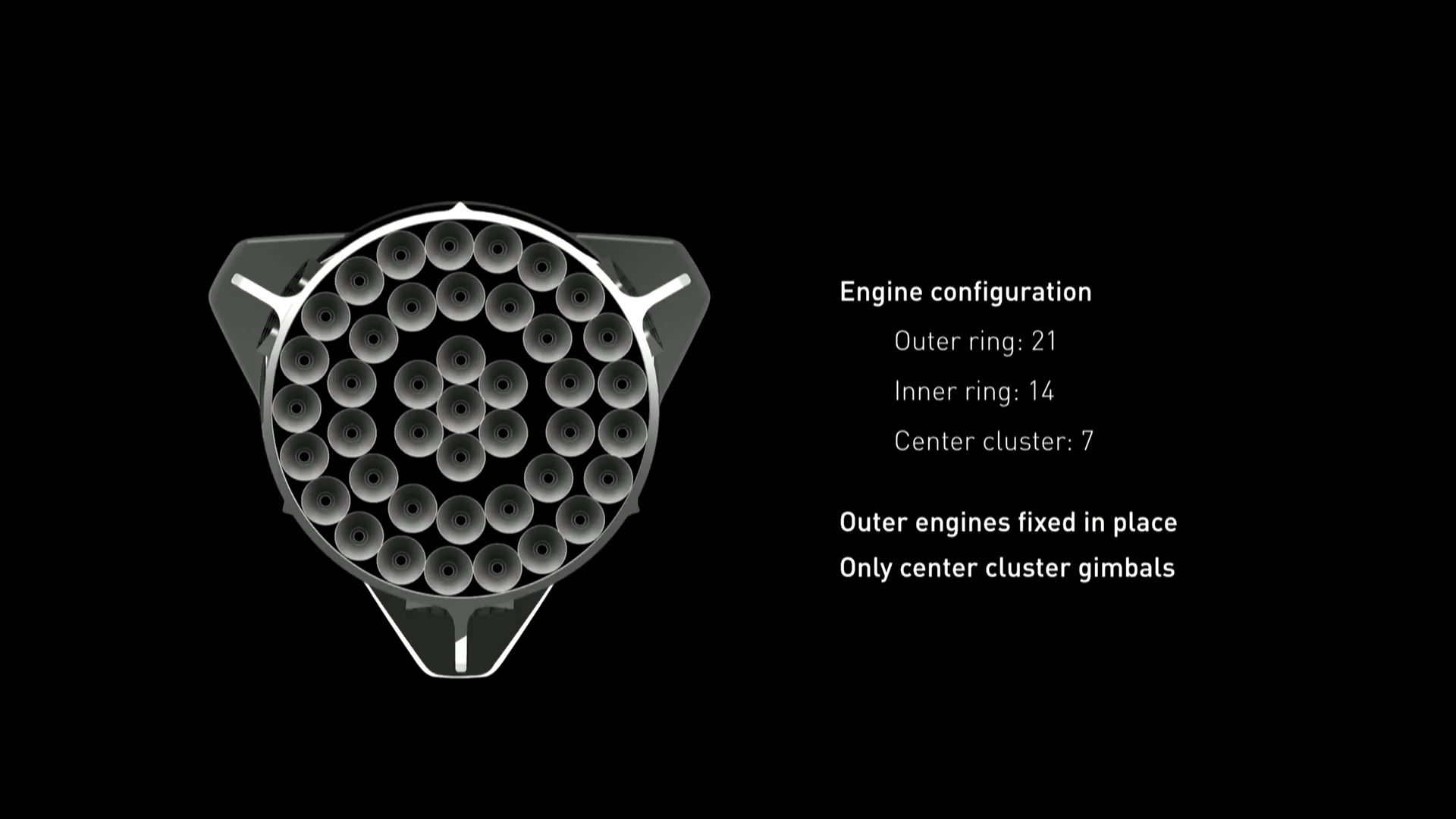
Ilon Mask explained that the engines of the ship allow to hover above the surface of Mars during landing. But this consumes a huge amount of fuel, so this is an unreasonable use of resources. Therefore, hang above the surface plan to use only in emergency conditions, but in reality the landing will be carried out at speed. The ship is designed for a maximum overload of more than 20G. Nominally, the ship will have a nominal maximum acceleration of about 5G, but at the same time must withstand short-term peak overloads of 2-3 times more. As for the booster, it will have a nominal value of peak overload of 20G, 30G or even 40G, and it will not break.
The third stage . The first manned spacecraft is being sent to Mars with equipment for the construction of the Mars Base Alpha rudimentary base with a power plant and the completion of a rocket fuel production plant. Almost the entire cargo hold holds. The crew of the ship is minimal - about a dozen people.
Explanation: the first manned mission will travel without fuel on the way back, because a lot of cargo is required to deliver to the Red Planet. They do not have the ability to replace the payload with fuel. At this time, the rocket fuel plant on Mars is not yet ready, so the ship of the first colonists will not be able to refuel in orbit and quickly return. Most likely, this means a guaranteed death of colonists on Mars, if you can not think of a way to get them back.
The fourth stage . At the fourth stage, an attempt will be made to double the number of flights during each confrontation of the Earth and Mars every 26 months, then the distance between them is reduced to 55 million km. At these intervals, you need to send as many cargoes to Mars as possible, “until the city on Mars can grow by itself,” Ilon said. Obviously, he meant until the Martian colony becomes partially autonomous.
Ilon Mask explained that at maximum fuel loading the ship could fly from Mars to Earth at any time, that is, at any relative position in the orbits. This feature can be used in case of emergency. For example, for rescue operations.
Martian colony
The Interplanetary Transport System project provides for a two-year stay of reusable spacecraft in Martian orbit. When Mars and Earth diverge a long distance, interplanetary flights temporarily stop. In this regard, it is clear that astronauts will live for some time on Mars before returning to Earth (not counting the participants of the “Golden Heart” mission, who are unlikely to stretch to the reverse of the mission).
The question arises of how long-term astronauts will be provided on a Martian base. How will the Martian materials be used - for example, regolith - for the construction of base buildings.
Ilon Mask replied that for the first time it was planned to build geodesic domes of glass panels with carbon fiber frames on the surface of Mars.
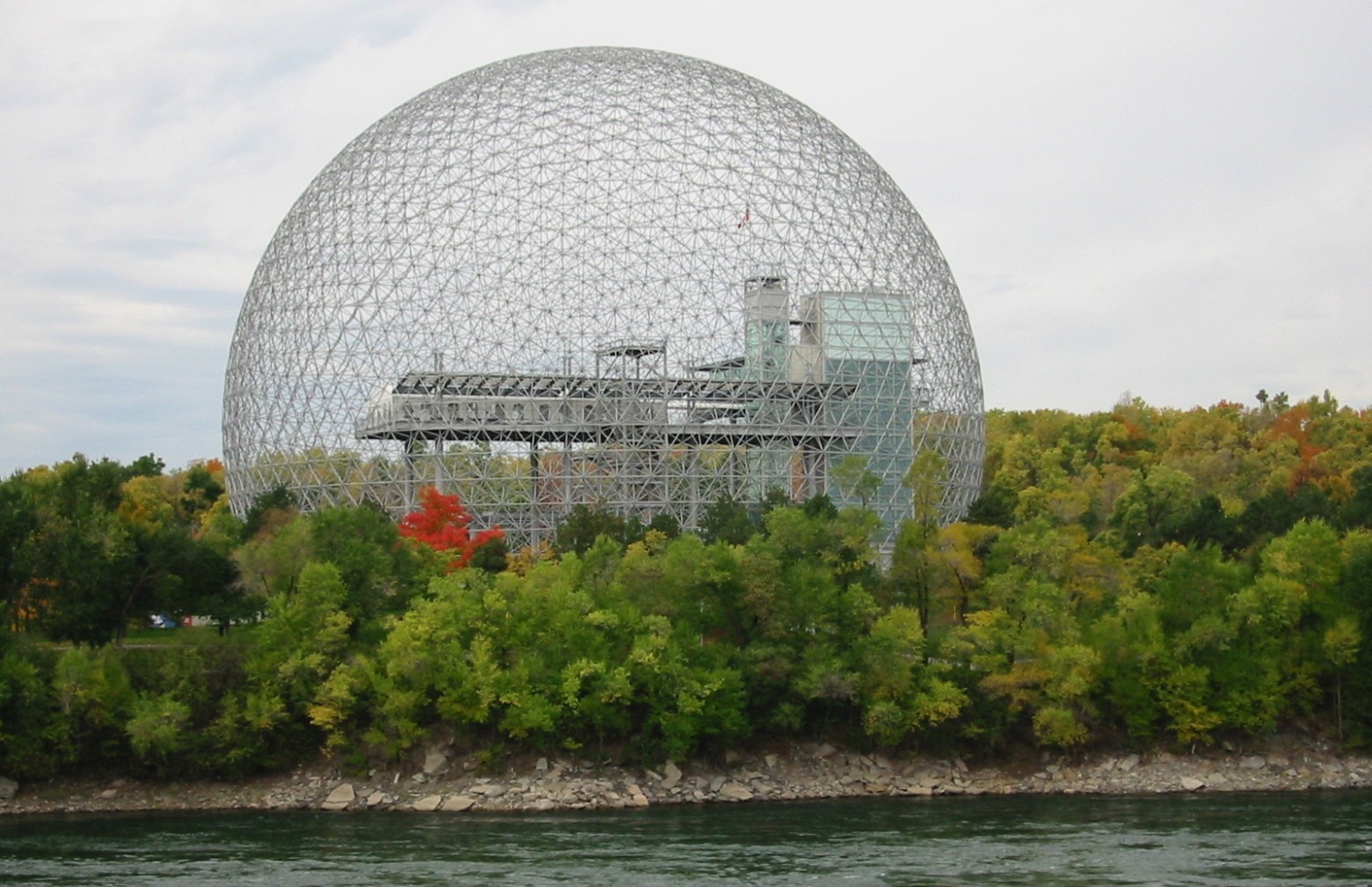
The geodesic dome of the Montreal Biosphere (formerly the US Pavilion at Expo 67), created by architect Richard Fuller
Geodesic dome - the construction of a spherical shape, assembled from rods, forming a geodesic structure, due to which the structure as a whole has good bearing qualities.
The stability of geocouples is important in the difficult conditions of sandstorms. Geocupal will protect colonists from strong Martian winds, reaching a speed of 100 m / s during spring dust storms. Dust storms can cover the entire planet. Atmospheric turbulence also manifests itself in the form of unpleasant local vortices.

The dust whirlwind photographed by the Spirit rover on May 15, 2005
In addition to geo-domes, tunnels will be built on Mars for the movement of a multitude of “droids” who will mine minerals and build new tunnels. Ilon Mask believes that with time a large amount of air under pressure will be pumped into the geodom. From there it will be possible to remove industrial facilities and live in a pleasant ecosystem, surrounded by green plants.
To the statement of Ilona Mask, it should be added that strong lava tubes and caves, also potentially livable for colonists, were found in the Martian soil. Of course, such successful geological structures have yet to be found in the landing area and be thoroughly explored before use. There are very real concepts of underground boats - self-propelled machines that can move underground, independently making their way. The beauty of the underground boats is that it does not require the construction of supporting structures around the perimeter, because the kilometers of the tunnel will be automatically reinforced by molten rock.

Trebelev's subsurface at Grace Mount on the eastern slope of the Ural Range in the Sverdlovsk Region (Russia), during tests in 1946
There are many other options for placing the colony under the ground. A few meters of soil over your head will reliably protect colonists from cosmic radiation, the damage to which is scientifically proven for the body, including the nervous system .
Whichever accommodation option the colonists choose for the Martian base, it is obvious that a separate contractor who has experience in similar design work on Earth will be engaged in the construction of geo-domes or the laying of tunnels.
Underground tunnels look more realistic, though boring. Cities of green glass geo-domes on the red surface of Mars are, of course, a more beautiful picture.
Probably, for the sake of security, it will be logical to build a large number of smaller geocupulums than a small number of large domes. So, we are unlikely to see huge settlements covered with one dome, as in the Martian colonies from the sci-fi anime series Cowboy Bebop.

Martian Town at Cowboy Bebop
Big road ahead
Ilon Mask admitted that there is still much to be done to implement ambitious plans. He was asked what technology or material needed the most refinement for the implementation of the Interplanetary Transport System project. He answered the following ( rroyter translation ):
“Not so long ago, it was the search and development of a new, extremely corrosion-resistant alloy in the hot, oxygen-enriched environment of the turbopump, which develops a crazy pressure of 300 bar in the main chamber. In such conditions, everything that can burn is on fire. Now, we seem to have achieved this, because the Raptor turbo pump does not show erosion in test burns, although there is room for some optimizations.
The biggest problem now is to insulate tanks from carbon fiber with cryofuel and hot autogenous supercharging. And the oxygen tank is also a problem with corrosion, because it is inflated with pure hot oxygen. We definitely have to put a layer of some inert substance on the inner walls of the tanks. I hope it can be applied with a spray gun, but if we have to, we will weld thin sheets of Invar . ”
Now SpaceX engineers are actively working on the design of the fuel tank.

Interplanetary Transport System Fuel Tank
Ilon Musk, said that a real flight tank will be somewhat longer than the prototype in the photo, but of the same diameter. In theory, he will be able to keep cryogenic fuel without leaks, even without using a sealing link. The first tests showed encouraging results. In the coming weeks, the tank will be tested at 2/3 of the maximum pressure, having previously been towed to the ocean on a marine barge (the wits on Reddit were asked to turn around as many video cameras as possible during this test).
On the way to the Martian mission, there are still many technical problems to overcome. Considerable engineering work still lies ahead, but these are very interesting tasks. In any case, the development of the project, testing of various components of the system and the first test launches will be very interesting to follow.
Source: https://habr.com/ru/post/398635/
All Articles